We Tried 6 Ways of Making Flaky Pie Crust and Found an Absolute Winner
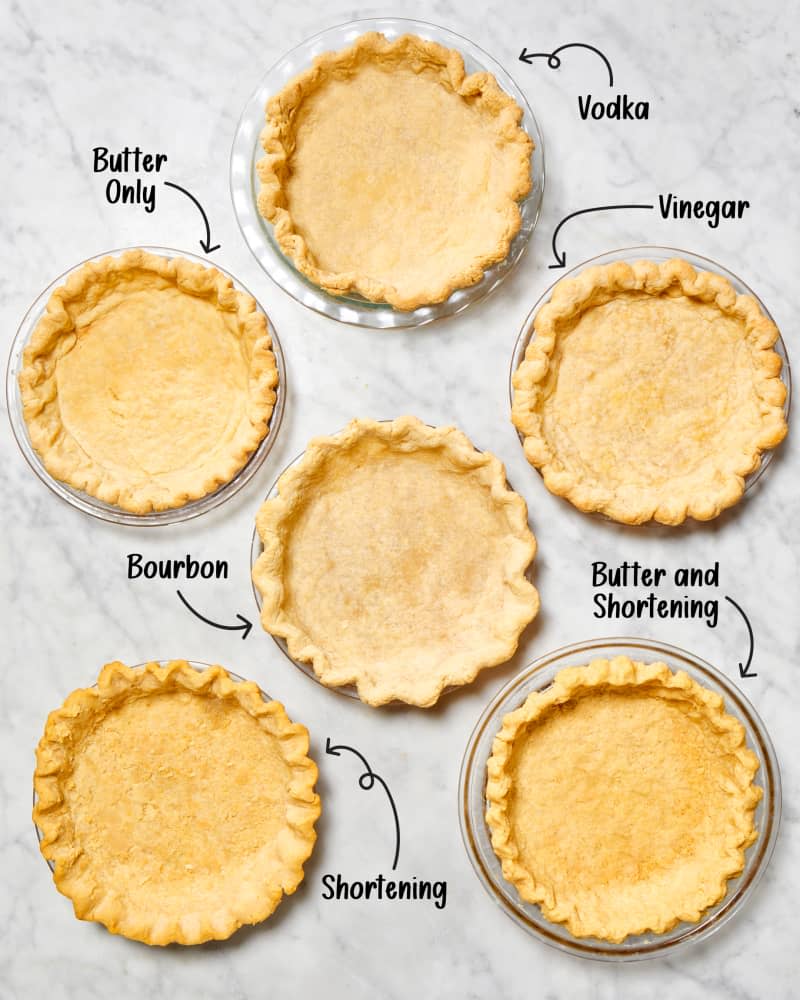
If there’s ever a time to make your own pie crust, it’s the holidays. The extra effort put into homemade treats is an expression of love for your family. After all, you typically have a little more time to spend on cooking projects this time of year. You can show off your beautiful ceramic pie plates on the buffet and put to use all those crimping techniques you studied in how-to videos for your pumpkin, pecan, and apple pies.
Pie crust can be a little intimidating, though — even for experienced bakers. The aim is tender, flaky layers, with little shards of crust with each bite. Achieving that ideal texture takes care in the preparation and in the choice of ingredients. If you choose poorly, you could end up with a tough crust, one that’s more chewy than flaky, and/or one that’s bland. In an effort to find the best approach, I tested six ingredient-based methods for pie crust to see which one would reign supreme.
How I Found the Best Way to Make Flaky Pie Crust
The ingredients: Pie crust doesn’t require many ingredients, so I made sure to choose ones that I know perform well —namely King Arthur unbleached all-purpose flour. For the butter, I went with the unsalted variety (which is standard) from the brand Land O’Lakes, and when it came to shortening, I used Crisco sticks.
The base recipe: For each test, I used Erin McDowell’s All Buttah Pie Dough, a highly rated recipe for a single-crust pie — and I simply tweaked the recipe for the method I was testing (e.g., replacing the butter with shortening).
The tests: Making pie crust is a bit of a process. I watched the accompanying how-to video for the pie crust recipe linked above, which offers lots of great tips for mixing and rolling the dough. I used the same steps for each pie crust I tested.
After mixing together the dough, I formed it into a disc and chilled it for 1 hour before rolling it out.
I used heavy-duty disposable pie plates for all my tests.
After fitting the pie dough into the pie plate, I chilled it for 10 minutes to allow for any shrinking. At that point, I trimmed the excess dough, folded the edges under, and fluted them.
I docked (or pierced) the dough all over, including the sides; lined the dough with parchment paper; and filled it completely, up to the edges, with dried beans.
Because I was baking pumpkin pies (with a wet filling), I parbaked each crust at 425°F for 15 minutes, then removed the parchment and dried beans, and baked for 3 minutes to dry out the bottom of the crust.
I also baked some of the scraps as “chips” so that I could zone in closely on the texture.
After cooling the crust, I baked a pumpkin pie using the recipe on the Libby’s pumpkin can.
I baked all of the pies on the same day. After allowing them to cool completely, I tasted them all side by side. I also refrigerated the pies and tried them again the next day.
Ratings: I judged each method on a scale of 1 to 10, with 10 reserved for absolute perfection. The main criterion was texture, with the goal of a super-flaky and tender crust. A secondary consideration was flavor.
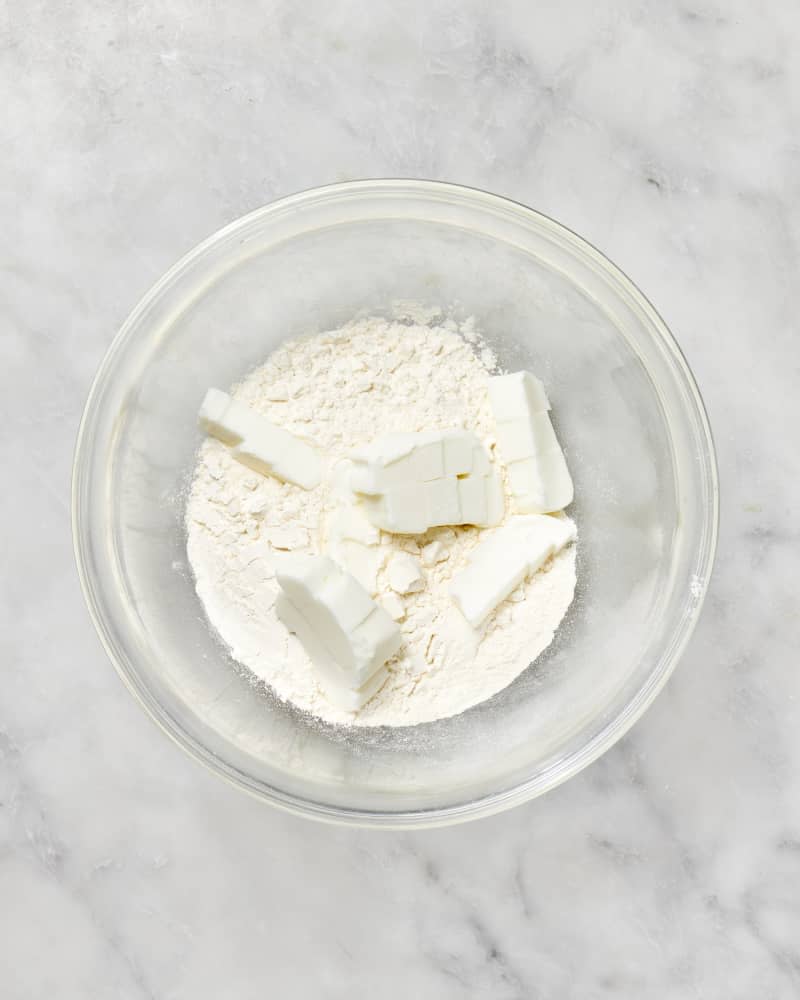
Flaky Pie Crust Method: All Shortening
Rating: 6/10
About this method: As previously noted, I used the base recipe and simply changed out the one variable I was testing — that is, I replaced the butter with shortening. I stashed the shortening in the freezer overnight to ensure it was cold when I worked with it.
Results: It’s worth mentioning that even frozen, shortening is significantly softer than butter. Unlike butter (which contains roughly 20% water), shortening is all fat with no water. Because the fat is so soft, the dough (even after chilling for an hour) was soft and very easy to roll out. The crust was very tender, verging on being more crumbly-mealy than flaky. The scraps I baked had fewer distinct layers in them, but the crust in the baked pie was reasonably flaky. The flavor was quite bland, though, and the crust’s texture was just a little too fragile for the filling.
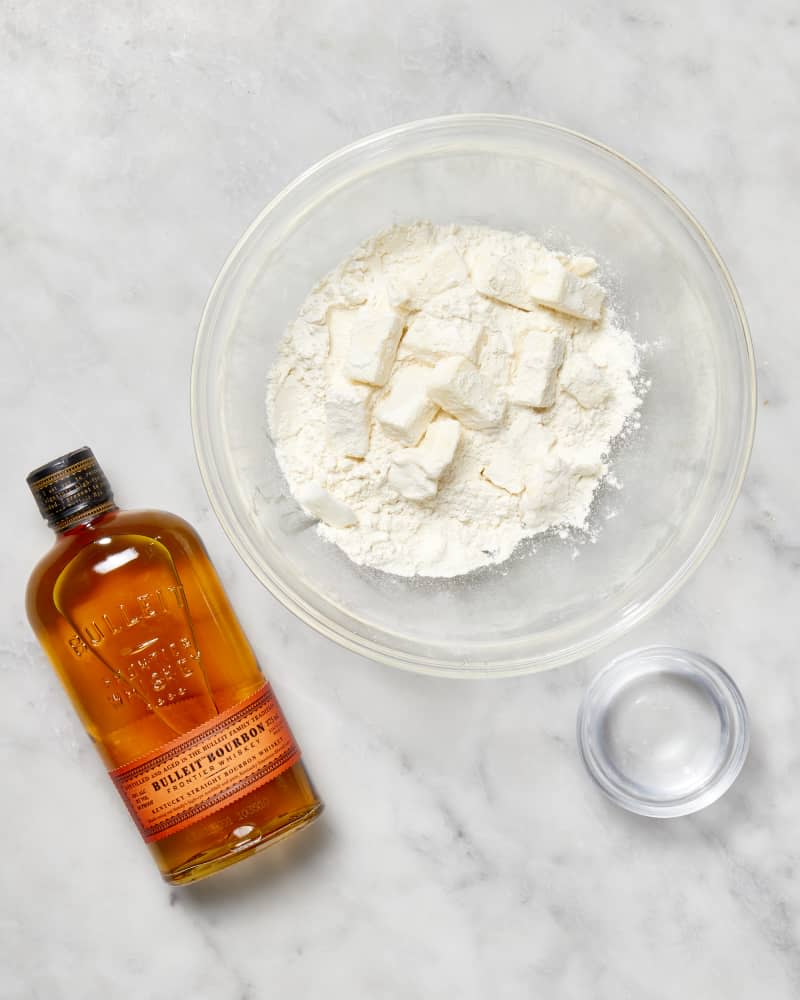
Flaky Pie Crust Method: Bourbon in the Dough
Rating: 7/10
About this method: I had heard of using vodka in pie crust before but not bourbon, yet several sources recommend a splash of whiskey in the dough. Following the advice of Cook’s Illustrated, I used 80-proof bourbon and made a 50/50 mix of it and ice water for the liquid that brings the dough together. The science says that the alcohol helps prevent gluten from forming in the dough. (Gluten gives bread its structure and strong, chewy texture, but you don’t want that in your pie crust.)
Results: First of all, the dough smelled fantastic! The baked crust had a nice buttery flavor, and a good bit of medium-sized flakes were left on the counter after cutting slices of pie. The scraps I baked also had loads of flaky layers. The crust was very sturdy, but it verged on being tough; my fork had a hard time cutting through bites.
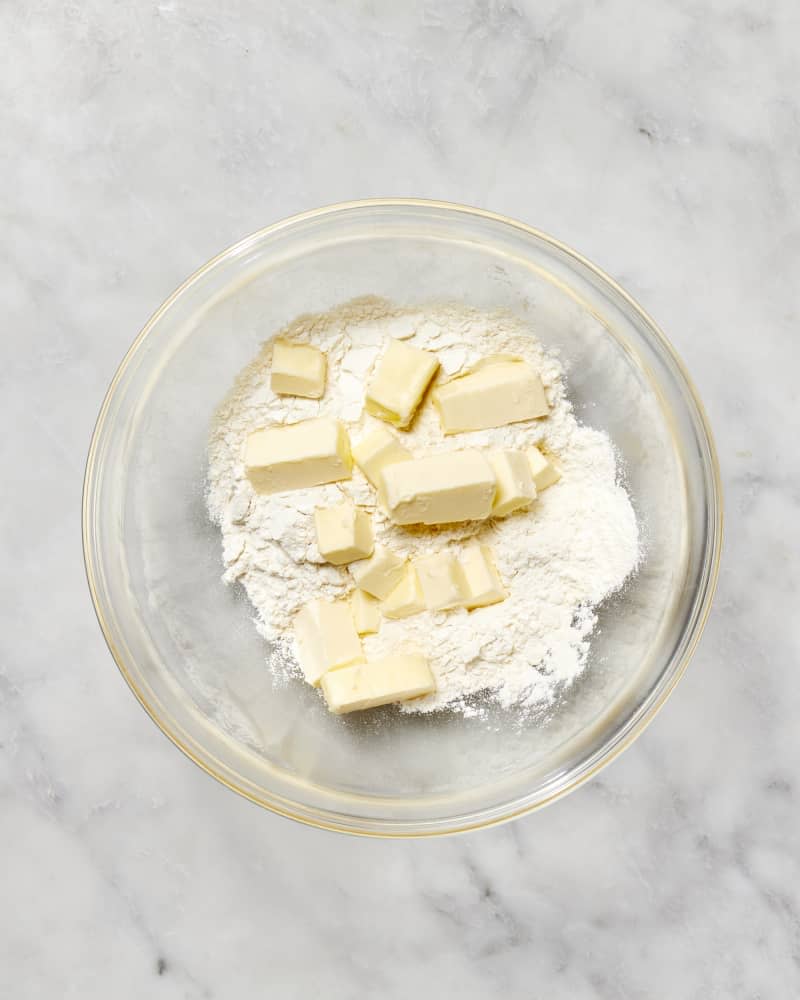
Flaky Pie Crust Method: All Butter
Rating: 7.5/10
About this method: For this test, I used the base recipe as is, with no adjustments or tweaks. I cut the butter into the flour-salt mixture with my hands, following the advice in the how-to video that accompanies the recipe. I then added ice water until the dough came together, chilled it, and proceeded with making the pie.
Results: If you’re surprised that the all-butter method wasn’t my top choice, believe me, I’m as shocked as you are. I always try to go into these kinds of tests with an open mind, but I did halfway expect this version to take top honors. I did get distinct layers in the crust scraps I baked, but fewer layers than with other methods. When I cut into the pie, the crust shattered and flaked into large pieces. The flavor was superb, rich and creamy-buttery, but the crust ended up more crunchy than tender, and it was a little bit tough.
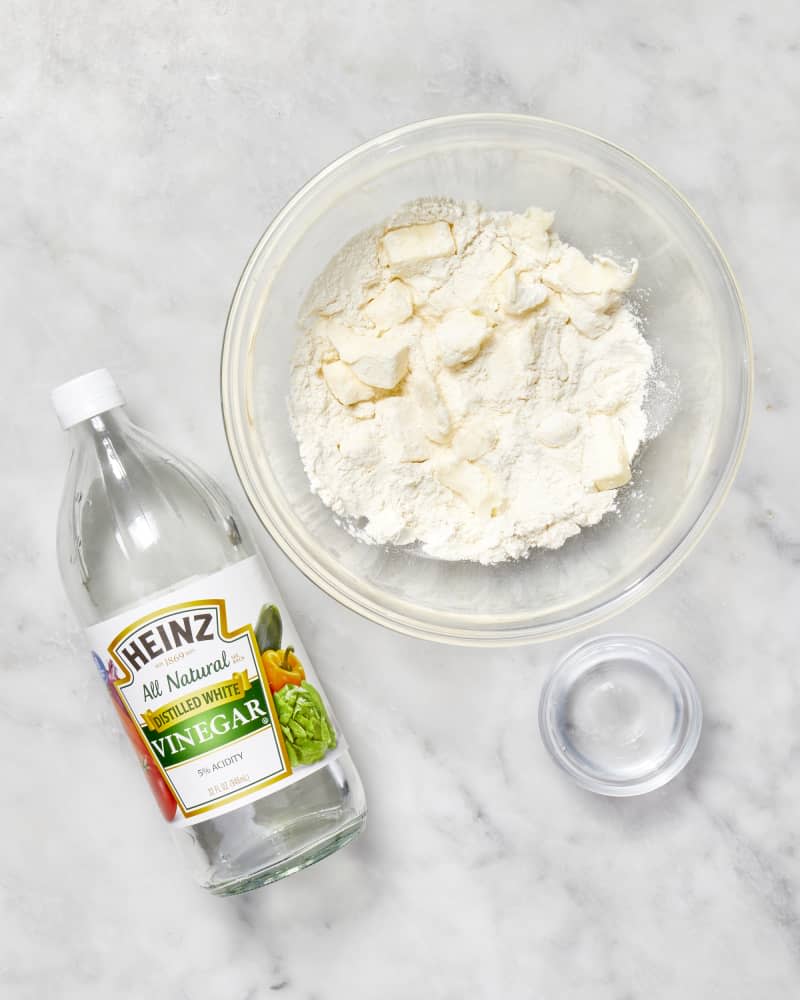
Flaky Pie Crust Method: Vinegar in the Dough
Rating: 8/10
About this method: Following the advice of Tasting Table, I replaced 1 1/2 teaspoons of the ice water used in the base recipe with white vinegar. The vinegar is touted to aid in browning of the crust and in preventing gluten from forming for an easier-to-work-with dough and a more tender crust.
Results: I did not notice a significant difference in the way the dough felt when rolling it out, nor in the browning of the crust. The flavor was rich and buttery; perhaps the vinegar enhanced the taste. When I cut into the pie, I had lots of medium-sized flakes left on the plate. I noticed plenty of distinct layers in the scraps that I baked as well. The crust was more tender than the all-butter crust, but it was still sturdy and the slightest bit chewy.
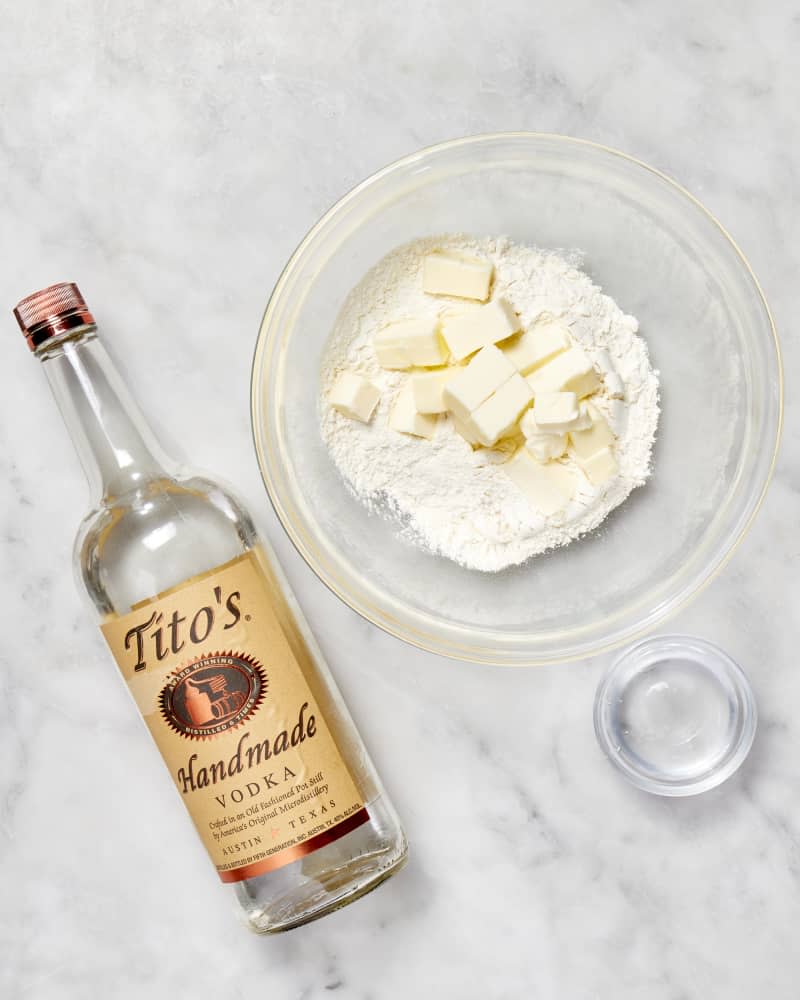
Flaky Pie Crust Method: Vodka in the Dough
Rating: 9/10
About this method: As with the bourbon method, for the vodka method I followed the recommendation of Cook’s Illustrated by using 80-proof vodka and making a 50/50 mix of it and ice water for the liquid that brings the dough together. Again, the alcohol is there to help prevent gluten formation, making for a dough that’s easier to work with and a crust that’s tender and flaky.
Results: The dough did not seem noticeably easier to work with; it felt on par with the other butter-based doughs. I noticed lots of distinct flaky layers in the scraps that I baked. And when I cut into the pie, I had tons of big flakes, almost as if I were cutting through puff pastry. The crust was quite sturdy but easy to cut through. The flavor was rich and buttery, but I detected the teensiest bit of toughness.
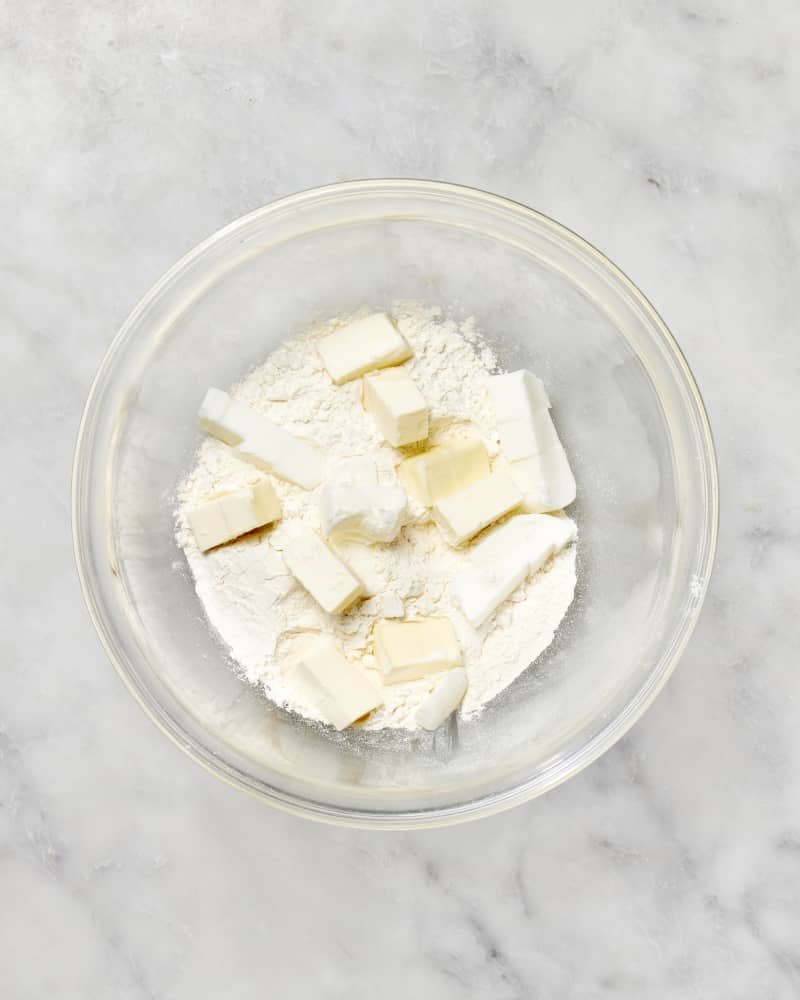
Flaky Pie Crust Method: Butter and Shortening
Rating: 10/10
About this method: While the all-shortening crust did not fare well in my testing (see above), I wanted to see what would happen if I used half shortening and half butter. I adjusted the base recipe by using 50% cold butter and 50% cold shortening. (I froze the shortening overnight.)
Results: With the blend of fats (firmer butter, softer shortening), the dough was a little easier to roll out but not too soft. The combo proved to offer the best of both fats, while each compensated for the shortcomings of the other. The scraps I baked showed loads of flaky layers, and the crust for the pie was sturdy but tender. The crust was very, very flaky (yes, it’s worth repeating), with lots of small- and medium-sized flakes. The blend of fats was ideal, yielding a tender crust that wasn’t too delicate and providing buttery richness for a delectable flavor.

